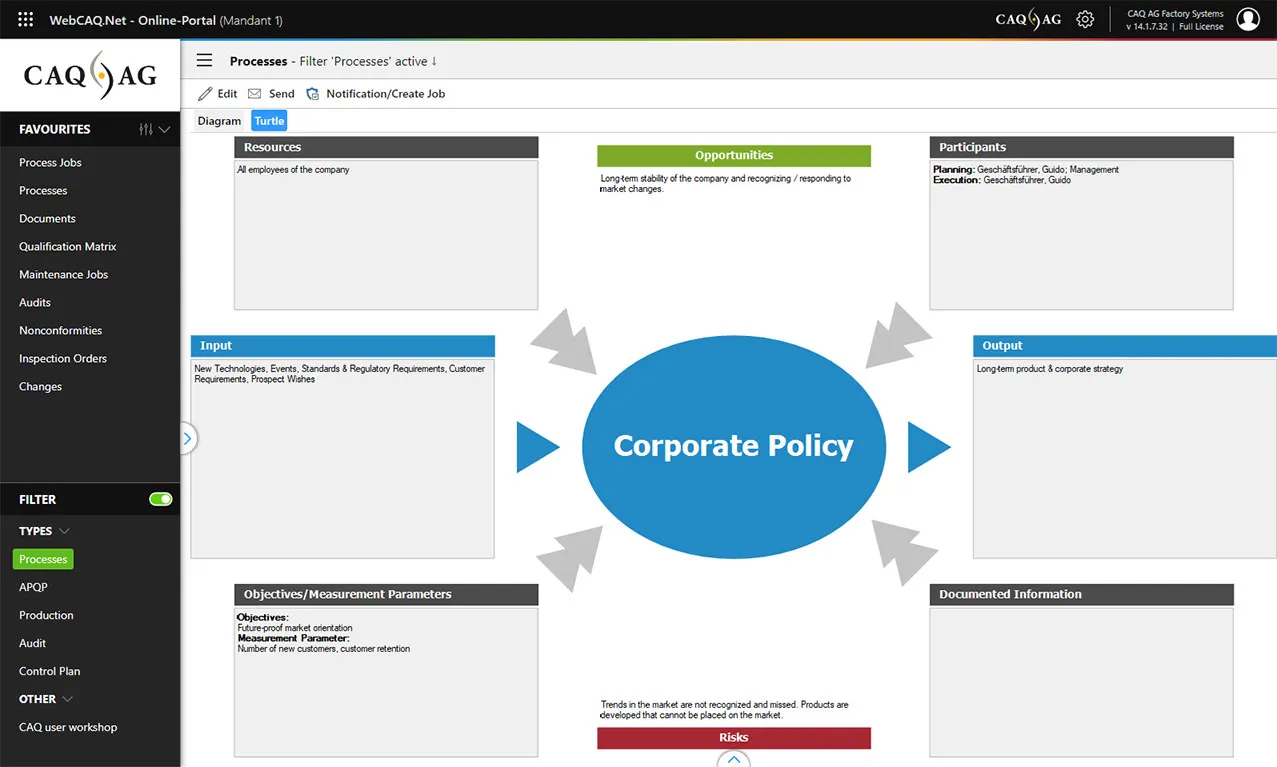
Process visualization and management software using Turtle Diagrams to analyze, plan, and optimize quality management processes.
Vendor
CAQ Factory Systems
Company Website

The Turtle Diagram is a process visualization and analysis method used in quality management to depict process steps or entire processes as a turtle shape. It allocates key process elements-input/output, resources, responsibilities-to different parts of the turtle figure, enabling comprehensive process description and planning. CAQ AG’s Process.Net software supports creating, managing, and visualizing processes with Turtle Diagrams alongside flowcharts and IATF-compliant forms. It integrates with other CAQ.Net modules to provide real-time data on document validity and employee qualifications, supports risk-based approaches per ISO 9001, and facilitates company-wide process communication via web applications accessible on multiple devices. This approach enhances process orientation, supports certification efforts, and enables dynamic, interactive process management across the organization.
Key Features
Turtle Diagram Visualization Visualizes processes as a turtle shape, assigning input, output, resources, responsibilities, and methods to specific parts.
- Visual process analysis and planning
- Structured use of key "W-questions" (What, Why, Who, How, With What)
- Suitable for risk management, audit preparation, and critical point analysis
Integration with Process.Net BPM Software Supports creation, versioning, control, and publication of processes with interactive flowcharts and forms.
- Dynamic risk matrix for risk-based process assessment
- Real-time validation of documents and employee skills via linked modules
- Interactive process maps linking related processes
Cross-Platform Web Applications Enables company-wide access and participation in process management from any device.
- Browser-based, touchscreen and keyboard/mouse input supported
- Ensures all relevant employees are informed and involved
- Facilitates continuous process improvement and certification readiness
Benefits
Improved Process Transparency and Control Clear visualization and comprehensive documentation of processes and responsibilities.
- Enhances understanding of process inputs, outputs, and resources
- Supports identification and mitigation of risks and opportunities
Supports Quality Management and Certification Aligns with ISO 9001 and other standards by enabling risk-based process management and audit preparation.
- Facilitates compliance through structured process documentation
- Helps in continuous improvement and preparation for external audits
Enhanced Collaboration and Communication Web-based access ensures all stakeholders can contribute and stay updated in real time.
- Promotes shared understanding and accountability
- Enables efficient management of process changes and training needs